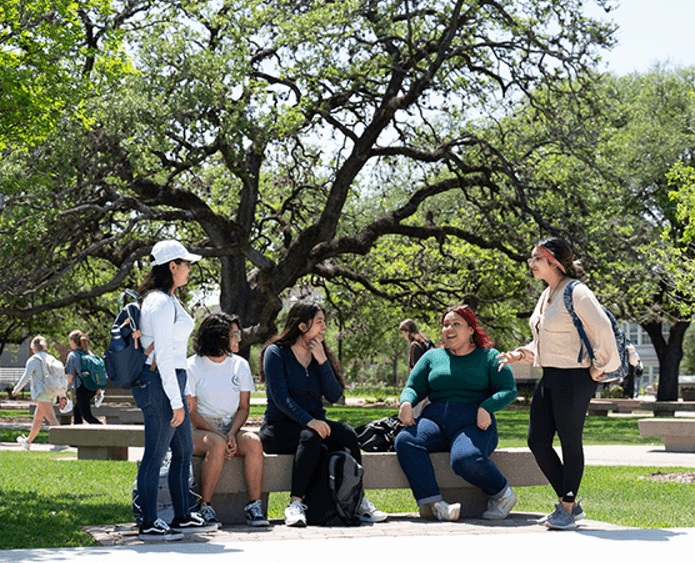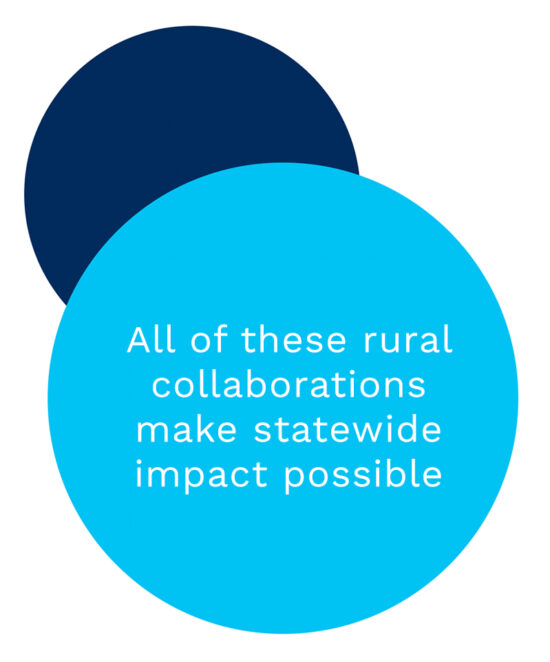GREATER TEXAS FOUNDATION | Annual Report 2021
FEATURES
Collaborations with Wider Horizons
The grant-funded projects in this annual report exemplify the powerful and deeply collaborative work occurring in rural communities across the Texas landscape.
Part of what makes these rural projects so potent is that they also support other priorities in the foundation’s strategic plan: Student Supports; Transfer, Transition, and Advising; Math for Success; and Innovation. This cross-pollination of strategy means greater success and more opportunities for the 700,000+ rural students in Texas.

Student Supports
Several grantees are using data to build robust student supports in their communities.
The Texas Impact Network, a joint venture of Educate Texas and The Commit Partnership, was awarded a $250,000 grant for their Rural Accelerator Program to establish a cohort of 20 rural school districts seeking to maximize funding resources from House Bill 3 (HB3). HB3 allows for funding to ISDs based on student outcomes in College, Career, and Military Readiness (CCMR) standards met upon graduation.
The Texas Impact Network works alongside rural districts to support data collection and to set rigorous goals for college and career readiness. With better reporting to demonstrate how students are meeting state readiness standards, the districts can maximize their funding from HB3. That additional funding provides more counseling and advising, work-based learning, advanced academics, and college prep courses, which translates into more students finding success in college and career.
The GTF investment has the potential to unlock up to $13 million in funding each year for all 20 participating school districts.
Amarillo College is partnering with Amarillo Independent School District and using data to understand the gaps between college-ready and college-successful. With a $181,695 grant, the two educational systems are building an integrated data sharing system to ensure alignment between college-ready indicators and community college outcomes. The team uses shared data to find better ways to prepare high school students to transition to college and provide targeted support services once they get there. They are also monitoring where graduates enter the workforce after graduation and whether they are able to attain greater earnings based on completing a degree or professional certificate. Both institutions and their students benefit from the data-informed feedback loop.
West Texas A&M’s Rural Resilience and Opportunity on the High Plains project provides support services designed to help students be successful and to foster homegrown talent that will keep their rural west Texas community thriving in the future. With a $786,360 grant, they provide mentoring, advising, academic success coaching, financial aid and financial literacy workshops, career and academic planning to high school, dual enrollment, and adult students.

Transfer, Transition and Advising
While at NTCC, students complete internships and community service alongside their studies to ensure they graduate career-ready and without college debt.
Math for Success
All of these rural collaborations make statewide impact possible, not just in their communities, but in urban and suburban communities across the state.
Learn More in our Resource Library

